Between sweetness and acidity: 2010 Mosel-Saar-Ruwer tasting in London
One of the pleasures of living in London is the vibrant wine trade and more wine-related activities going on than a Wine Rambler can participate in. I try to cover what happens in German wine though, and so earlier this month I set out to a Mosel-Saar-Ruwer tasting in the Great Hall at One Great George Street in Westminster. I had visited this fantastic location previously, for instance for the recent English Wine Producers tasting.
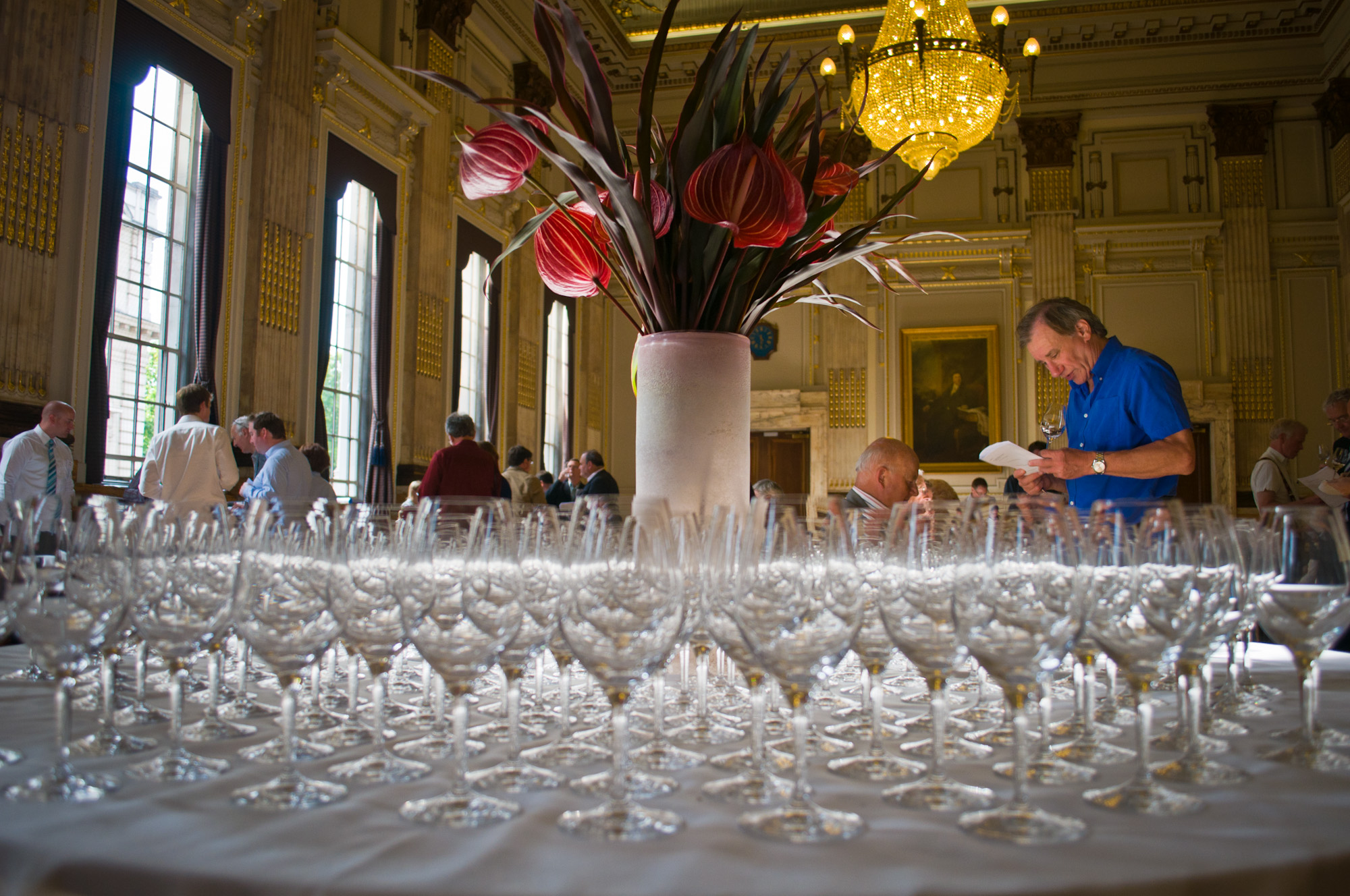
On 4th July it was not English but German wine in my glass, and from Germany's most famous wine region - a chance to try some of the off-dry and sweet Riesling from the 2010 vintage. And to be presented with an apple, the most unusual tasting gift so far.
The tasting was co-organised by the Grosser Ring ("Great Ring") Mosel-Saar-Ruwer and the Wine Society. Grosser Ring is an association of producers from the Mosel and its tributaries. It goes back to 1908 and members of the Ring also had a hand in founding VDP, the German association of premier wine producers. The tasting started in the early afternoon, for press and trade, and was later opened to members of the Wine Society. The Society is a wine club owned by its members with a reputation for sourcing interesting wines from across the globe.
The most notable difference between before and after 5.30pm (apart from a significant increase of attendees) was that the Wine Society members were clearly there to enjoy themselves and the spittoons were not exactly popular. While this can be seen as a good sign for the quality of the wine it meant that I had to constantly steer around large crowds to get to one of the few spittoons (because of day-job commitments I could only participate in the last few minutes of the press tasting). Still it was interesting to listen to non-trade people discuss, and praise, German wine, and it confirmed that one day we need to write an anthropology of wine drinkers and tastings.

2010 wasn't the easiest of vintages in Germany, and because of ups and downs of the weather Mosel producers will on average have about 30% less wine to sell than last year. On the risk of oversimplifying things, 2010 is a vintage of high acidity but also very good conditions for sweet wines with much botritys. Rumour has it that we will see some spectacularly good wines - at least from those producers who put in the effort and knew what they were doing. Overall I found this to be true for the eleven producers who presented some of their wines at One Great George Street.

Six of them came from the Mosel (Willi Haag, Reinhold Haart, Dr. Loosen, Wwe. Dr. H. Thanisch - Erben Thanisch, St. Urbans-Hof and Geheimrat K. Wegeler), one from the Mosel tributary Ruwer (Karthäuserhof) and four from the Saar (Forstmeister Geltz-Zilliken, von Hövel, Reichsgraf von Kesselstatt and Schloss Saarstein).
My usual, somewhat random anti-cyclical approach tasting - i.e. visiting whichever table is least busy at the time - meant I started out at St. Urbans-Hof. Here I was talked through a set of black and gold labelled Rieslings by Walter Speller, who last year had organised the London Who is afraid of residual sugar? tasting.
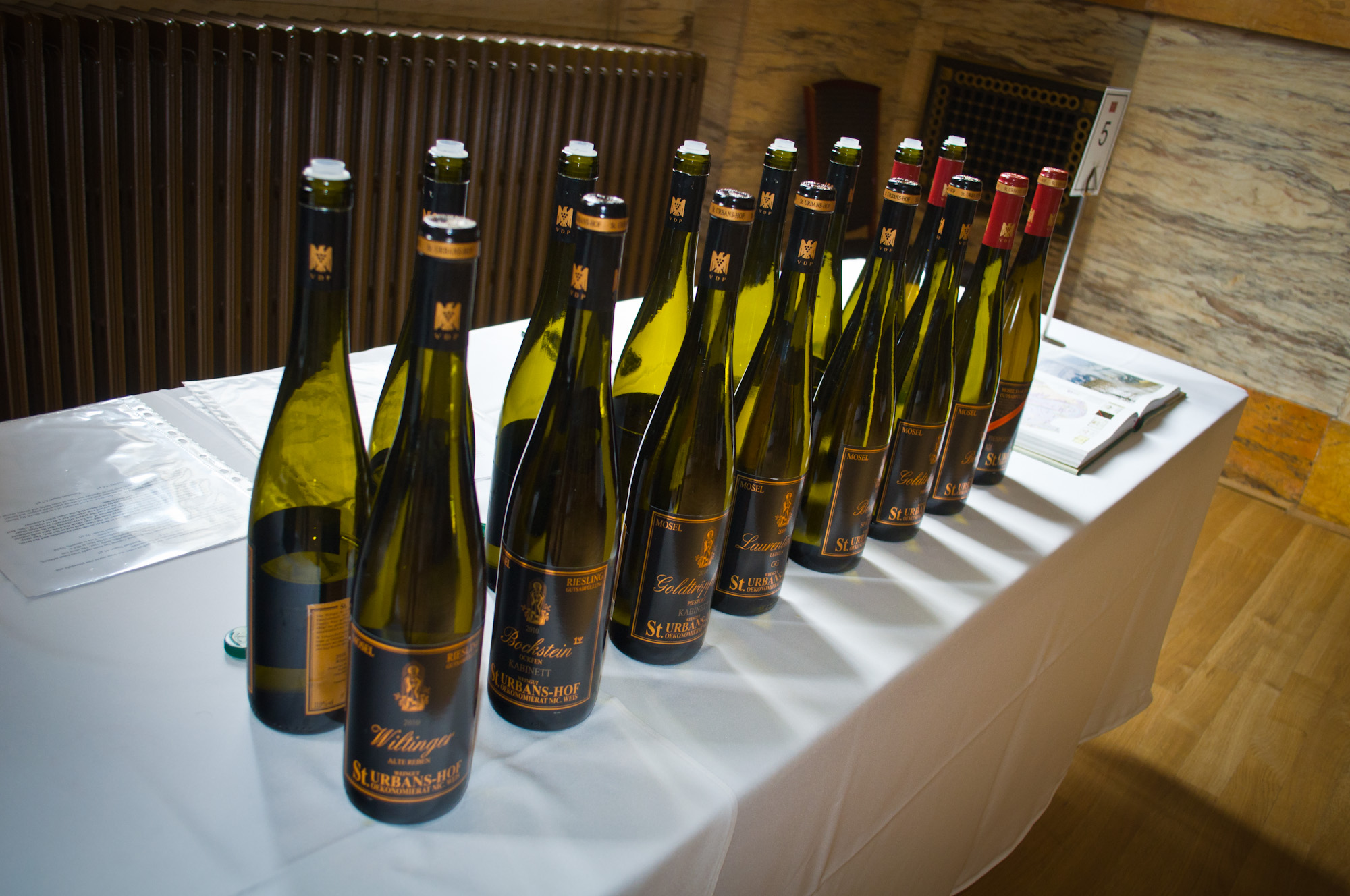
Tasting the St. Urbans-Hof Rieslings seemed to confirm my simplified vintage summary above: lots of acidity and lots of intensity and sweetness (acidity often around 10g and residual sugar even of the late harvests over 90g per litre) - but both coming together to create wines that felt surprisingly balanced.
I also encountered a lot of lovely herbal aromas, for instance in the good Bockstein Kabinett that also featured lovely peach and citrus (10.1g of acidity!) with a sweet, long finish, and the rich and juicy Goldtröpfchen Kabinett. The Spätlese from the Bockstein had a lovely elegant and almost playful nose (herb and peach again) and nicely blended its lively acidity and sweetness into a really good finish, although the latter was topped in length by the otherwise a little less exciting Goldtröpfchen Spätlese. The 2010 Bockstein Auslese was only marginally sweeter than the late harvest, featured more green apple but had to give in to the 2007 vintage with a fantastically exuberant nose and lovely caramel candy finish. The only dry wine, the 2009 Laurentiuslay GG, also had lively acidity, but overall the 2009 Bockstein Spätlese won over it and the off-dry 2010 Old Vines from Wiltingen as my favourite from a consistently good St. Urbans-Hof showing.
At Thanisch I only sampled some of the Kabinetts. All impressed me with a fairly long finish, with the 2010 Bernkasteler Badstube standing out for a lovely finish somewhere between juicy, caramel and lemon and the 2010 Doctor with a finish that was integrated into a caramel candy texture mouth-feel. Lots of good fruit here! And the realisation that at least middle-aged members of the Wine Society have a similar humour, seeing as I overheard the joke about the wine being "exactly what the Doctor ordered" about a dozen times.
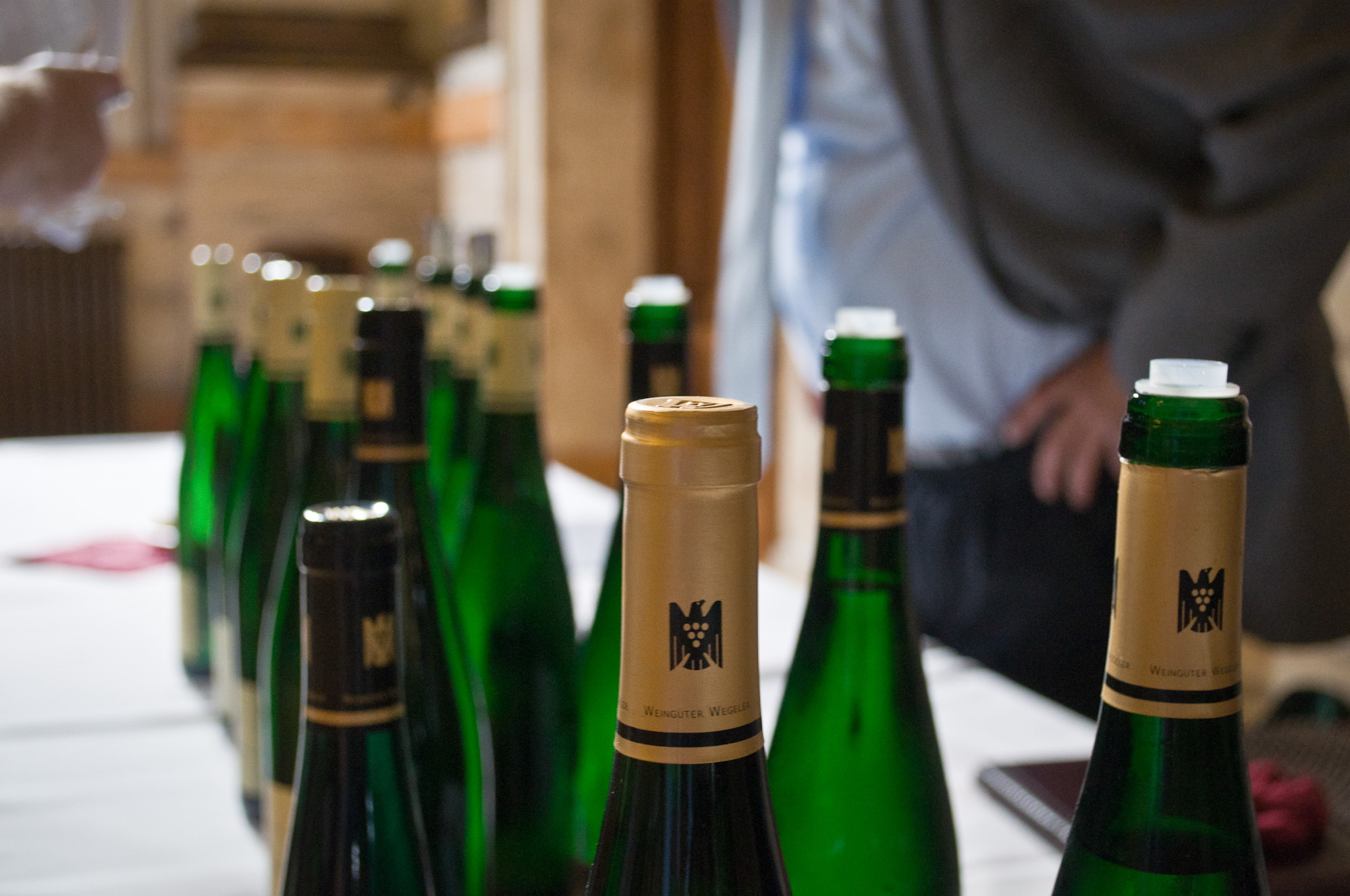
At Wegeler I started with a 2009 dry late harvest from the fantastic Wehlener Sonnenuhr (sun dial) vineyard. For a dry Riesling it felt surprisingly juicy and sweet, but its well integrated acidity gave it light character with lots of herbs and flinty mineral. The 09 Kabinett was considerably less exciting - good thing I tried the 2009 Auslese LGK from the Berncasteler Doctor (more jokes? you bet!) after that, a wine on which my tasting notes just say "perfect, herbs in harmony." The 2010 Auslese, I think, will need more time to work its way through opulence and acidity, but I was already impressed. I clearly preferred the 2010 Spätlese from the same vineyard over the 2010 Sonnenuhr, in particular because of its more edgy acidity (some may find it almost too edgy).
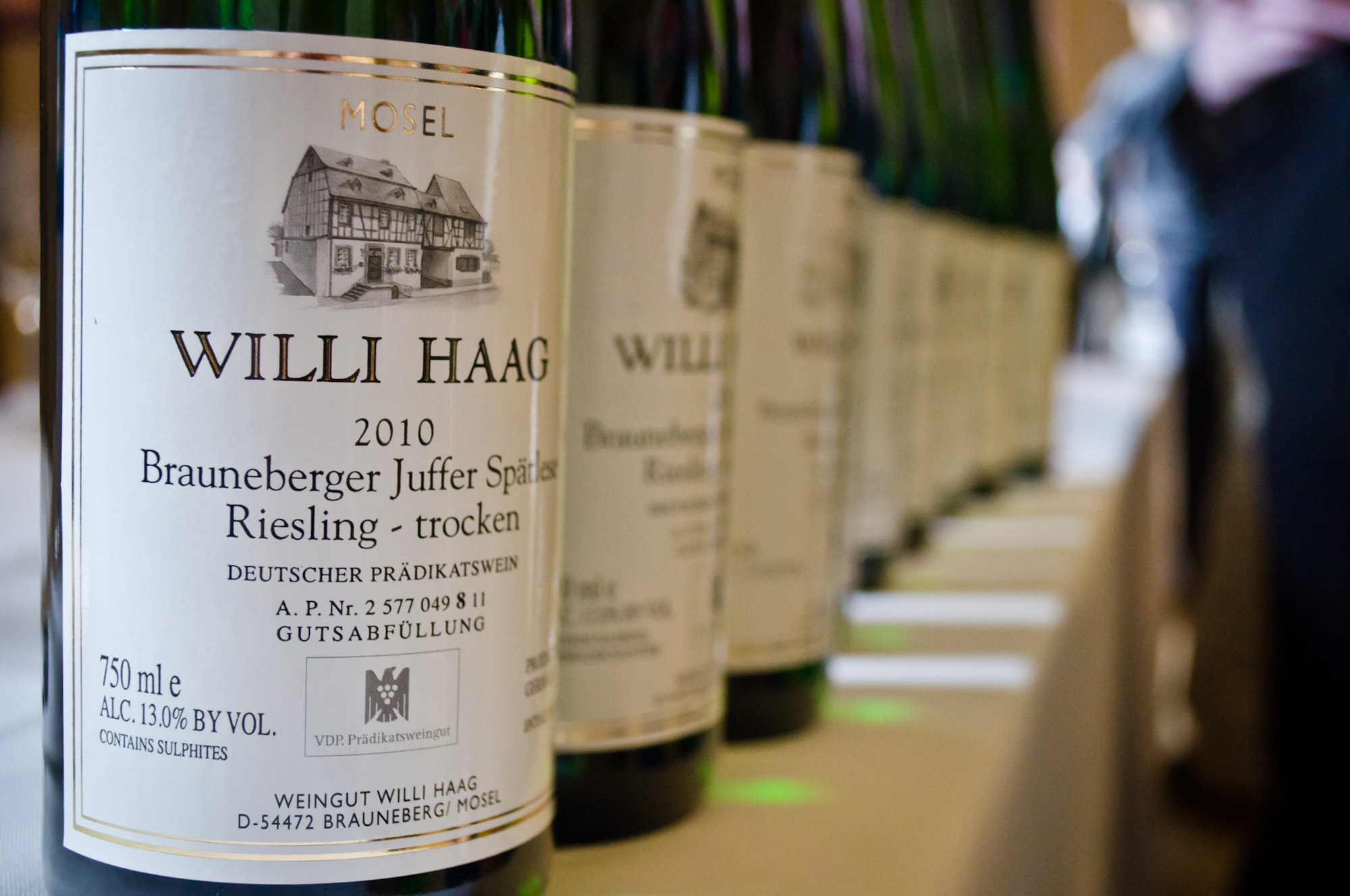
At Haag, the least exciting wine was the 2010 Brauneberger Juffer Spätlese trocken that was very fresh to the point of being a little too acidic fresh; the "feinherb" (off-dry) late harvest was more charming and round, whereas the 2008 Kabinett had aged nicely with very likeable citrus peach aromas, but not quite the depth of other Haag wines. Moving on to the more substantial 2010 wines, the Brauneberger Juffer Spätlese raised the residual sugar game with 83g and more intensity, but was beaten by the Juffer-Sonnenuhr Spätlese (91g/l) and the two corresponding Auslese wines (113 and 132g/l). All are good wines no doubt, but at least at this point in time they did not quite show some of the depth I was hoping for. Amongst these wines the Brauneberger Juffer Auslese was my favourite because it had integrated the sweetness best and felt very fresh.
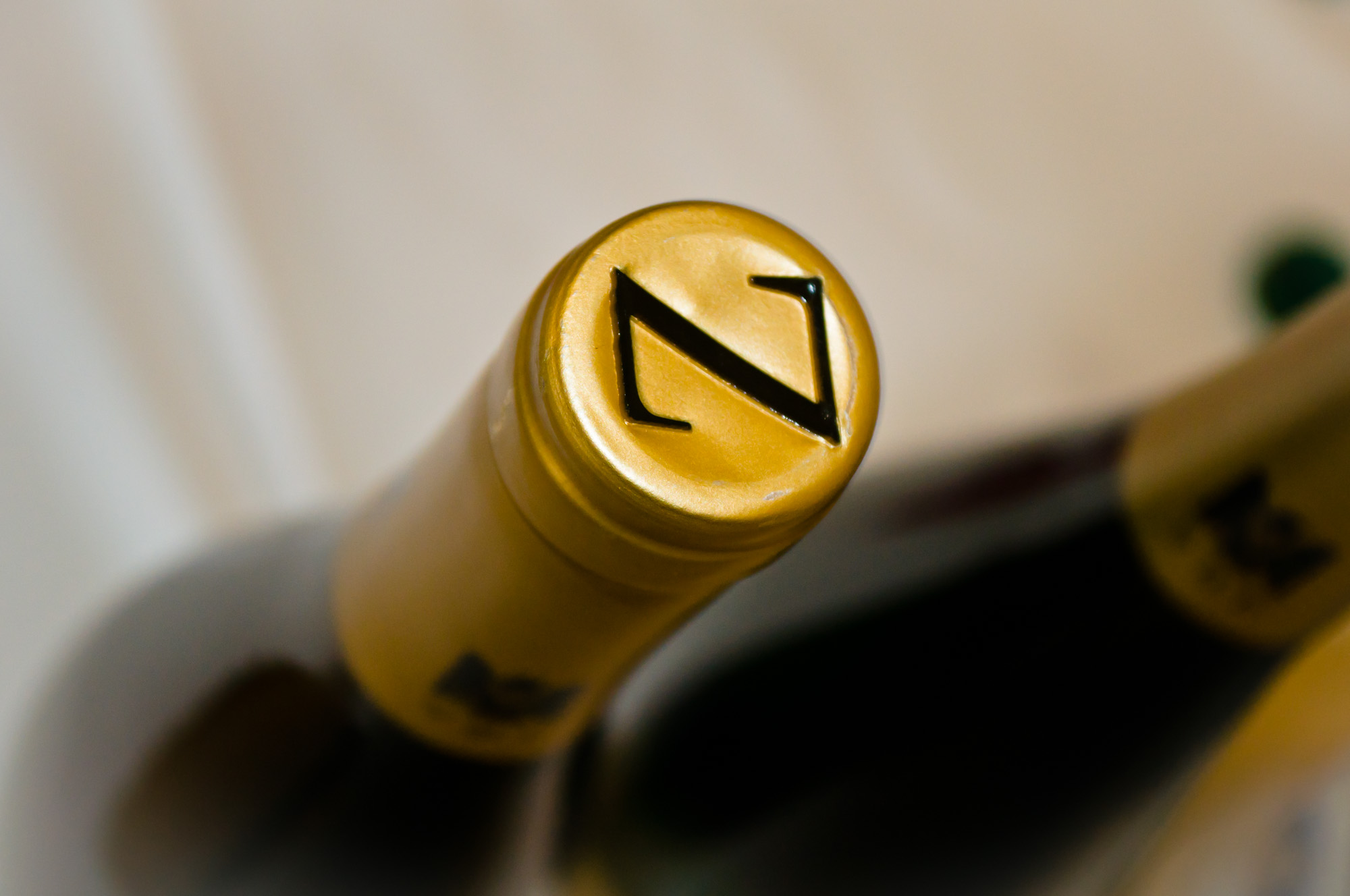
The showstopper at Geltz-Zilliken was a 1993 Saarburger Rausch Auslese that had the most lovely mineral smokiness and yet still felt so very fresh that I came back for a second sample - and an aftertaste that stayed with me for a while. This was not the only Geltz-Zilliken wine that I really liked, both gold capsule 2010 Rieslings from the same vineyard were very good, with the LGK version showing the most lovely sweetness - which is also necessary as the finish especially brought out a very notable amount of acidity. Generally I found the wines from the Saarburger Rausch vineyard to be very ripe in style, with much concentrated sweetness. Also good was the 2010 late harvest from the Ockfener Bockstein that had lovely apple flavours and a honey creaminess.
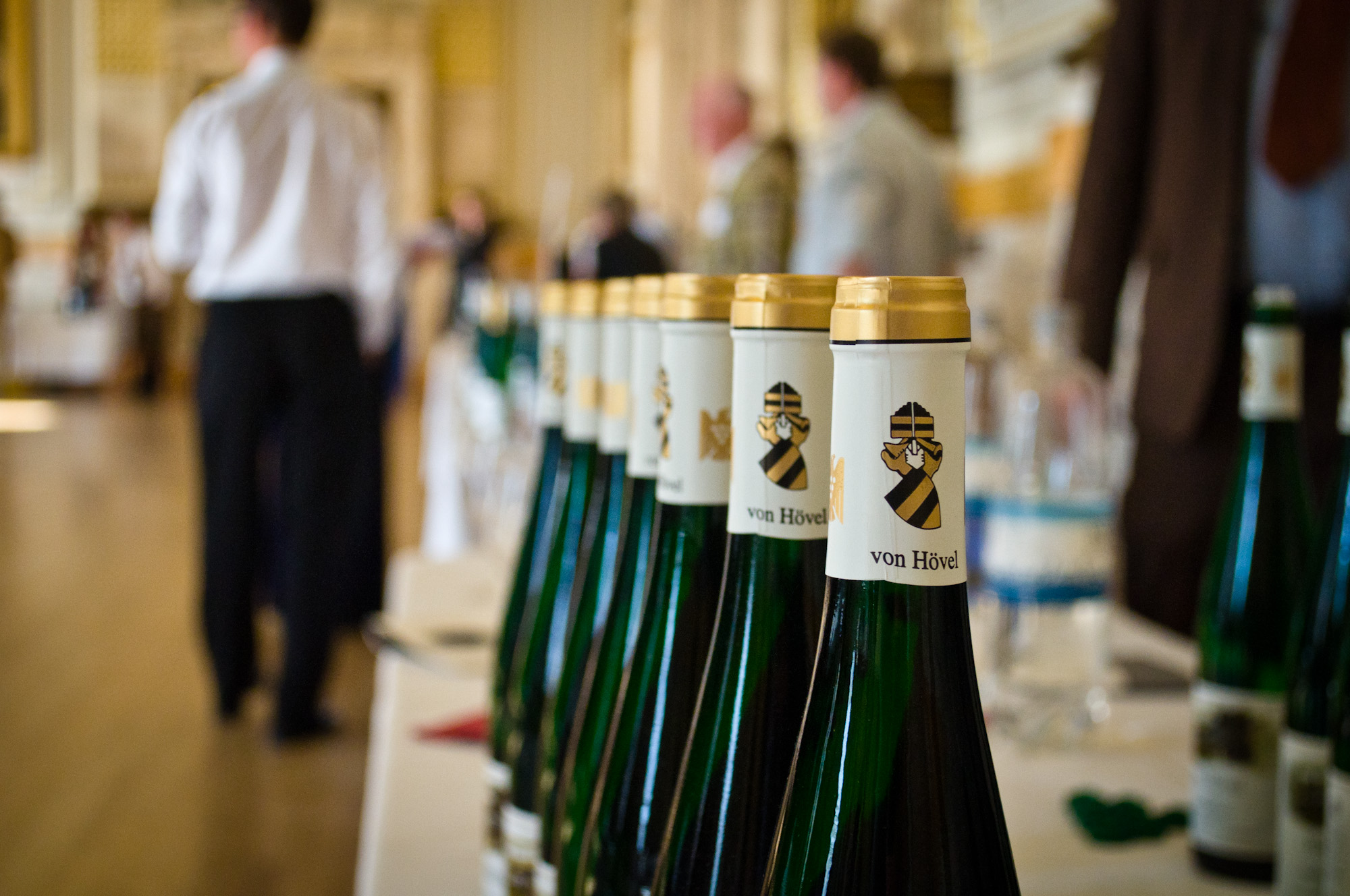
Neither Loosen nor Hövel did I do justice at the tasting - definitely something that has to happen at another occasion (let me just say that my tasting notes for Loosen's Erdener Prälat Auslese 2010 say "long-lingering mouthful of delight"). A producer that has already been covered on the Wine Rambler in much detail is Reinhold Haart. As Johannes Haart was there to present the wines I spent quite a bit of time chatting with him about this and that - we had met a few years ago at the Mosel when he was kind enough to give us Ramblers a tour of the cellar. The Haarts are still putting the final touches to the 2010 wines, and as I plan to get my usual annual delivery in autumn I will review them in more detail later. From that you can draw your own conclusion about whether I liked the 2010 Haart wines. Interestingly, Johannes brought along a 2003 and 2005 Spätlese to accompany the 2010 Kabinett, Spätlese and Auslese (plus the 2009 top dry wine that only this spring stopped fermentation), and the '03 showed very well - although the 2010 Goldtröpfchen Spätlese was my favourite from the Haart table.
At Reichsgraf von Kesselstatt I tasted two dry 2010 Rieslings, with the standard Riesling Dry being quite nice but also a not very memorable and the Graacher Riesling bringing out more concentrated fruit. Two wines from the Josephshöfer vineyard were very succulent and clearly reflected the different styles of Kabinett and Spätlese (also in terms of residual sugar, which is noteworthy as I tasted some very sweet Kabinetts too).
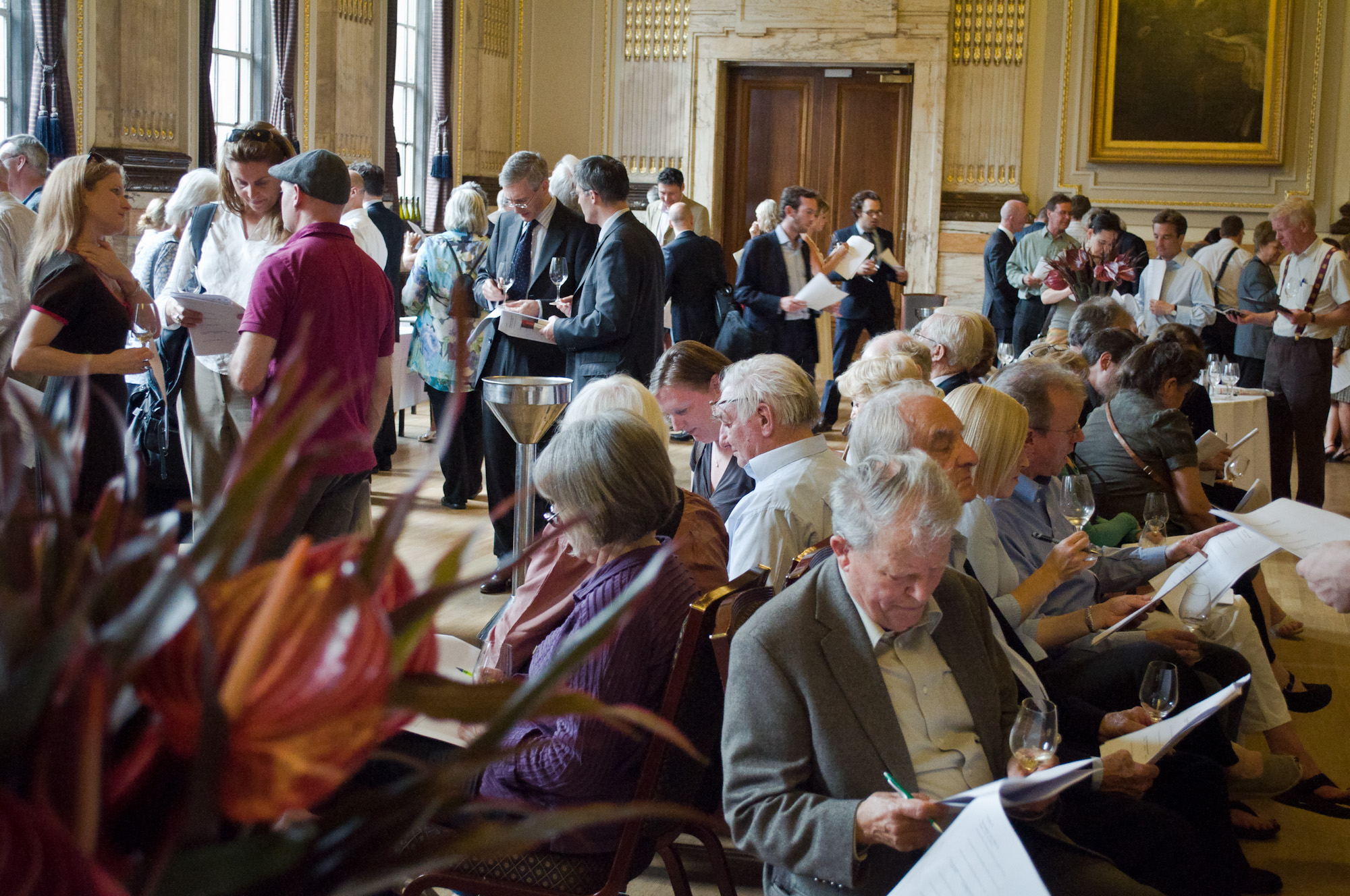
I am eternally thankful for Schloss Saarstein for being brave enough to not only showcase their Riesling, so I got to taste at least one wine made from a different grape variety: the 2010 Pinot Blanc was light, not without elegance, fresh, a little camomile, a hint of pleasant bitterness and a nice touch of smoky. Bonus points to Saarstein for the four Rieslings on show clearly reflecting the four different quality in terms of style and residual sugar. The Kabinett feinherb (RS 16g/l) was good, yet not exceptionably deep and clearly showed some acidity, whereas the Kabinett (RS 30g/l) had some fruity elegance and a good finish.
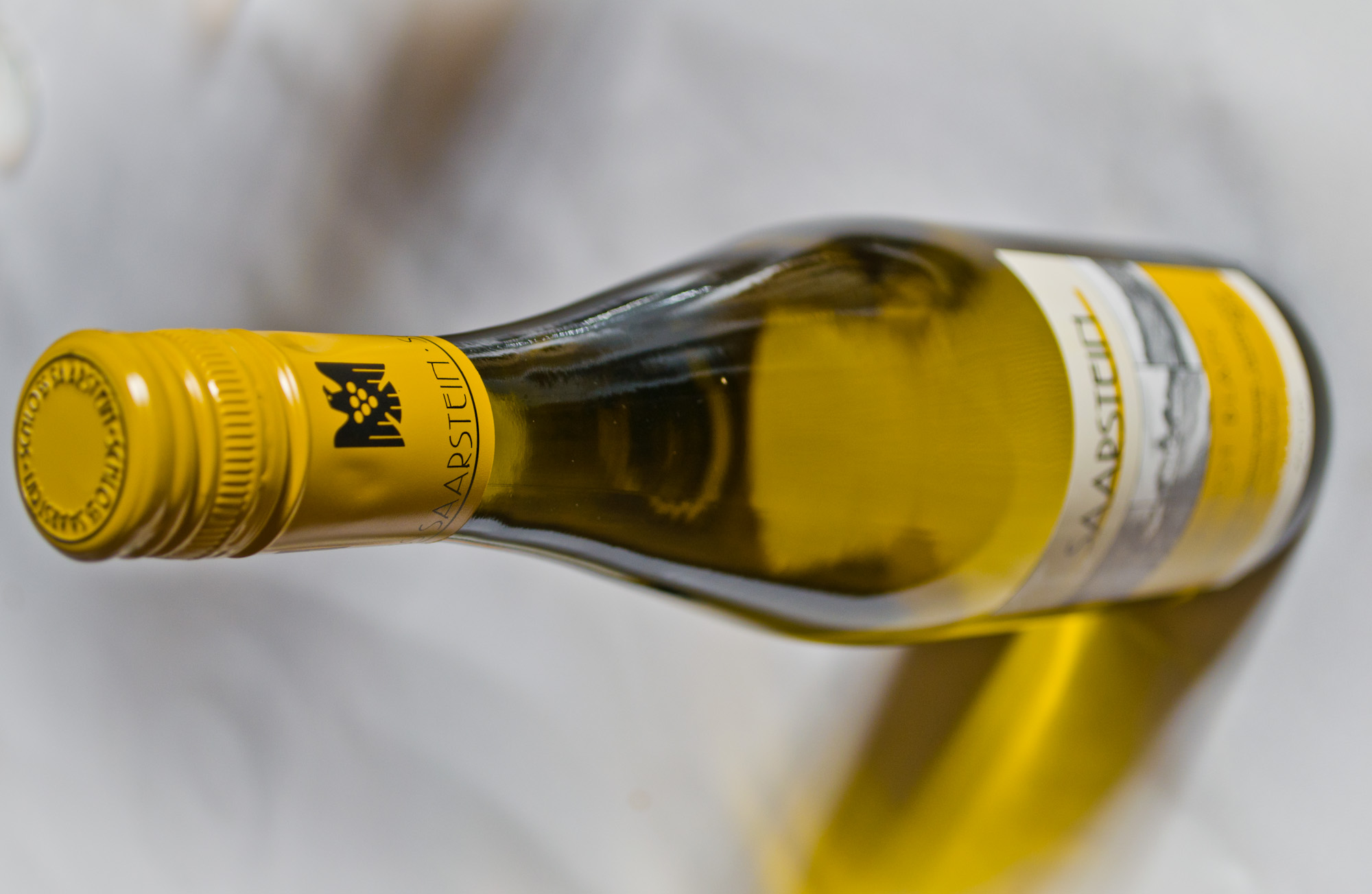
At Karthäuserhof I started with a 2009 dry late harvest Alte Reben ("old vines") that had a nice, earthy crunch, a pleasant roughness and a faint touch of RS to balance quite nicely. The 2010 vintage of the Alte Reben had a similar style with mineral crunch but also lovely herb, citrus and apple aromas - perhaps a little better than the good, but not brilliant '09. Both Kabinett and Spätlese from the Karthäuserhofberg vineyard were very good, with the Kabinett feeling very vibrant (and a good bouquet that amongst others featured cassis, peach and citrus), and the Spätlese riper in style, with more sweeter fruit.
The End, and a bit with an Apple (Sunset)
As you would expect from a bunch of top producers, I tasted some very good Riesling in the Great Hall. I was also impressed by how well many winemakers managed to balance insanely high levels of acidity, even though not everyone did equally well and even from the same producers some wines came out better than others. Sweetness helps a lot to balance acidity, but just increasing the sweetness can also lead to a wine that is imbalanced on both ends.

I have the feeling that some of these wines will need a few years before they show their true quality, and there is potential for greatness. I would be curious to try some of the 2010 Beerenauslesen and ice wines... What I also want to do is keep an eye on Geltz-Ziliken - as my first ever encounter with the Z was very pleasant.
Oh, and the bit with the apple. Well, when I said goodbye to Walter at the St. Urbans-Hof table I found that two items had made their way into my bag. One was a sample of a Kabinett wine, to be reviewed here in due course, and the other was an apple. It seems that seasoned tasting professionals like Walter take apples with them for appropriate, and if you listen to them quoting you acidity and residual sugar levels for long enough they might pass one on to you.
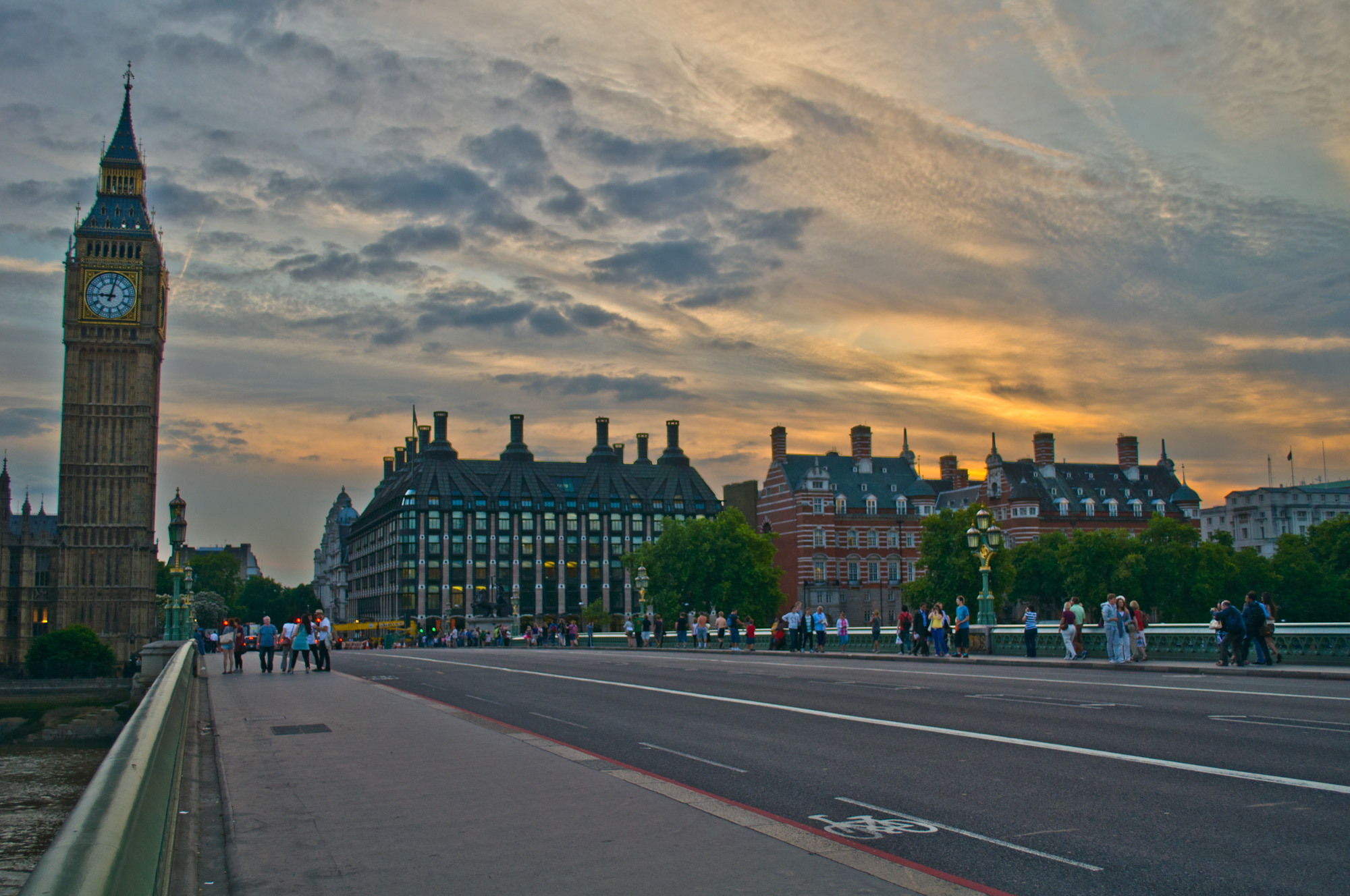
So when I walked past the Houses of Parliament to catch my bus home, I could enjoy a nice Big Ben sunset, an aftertaste of 1993 Saarburger Rausch and then a refreshing apple. Not a bad day.
